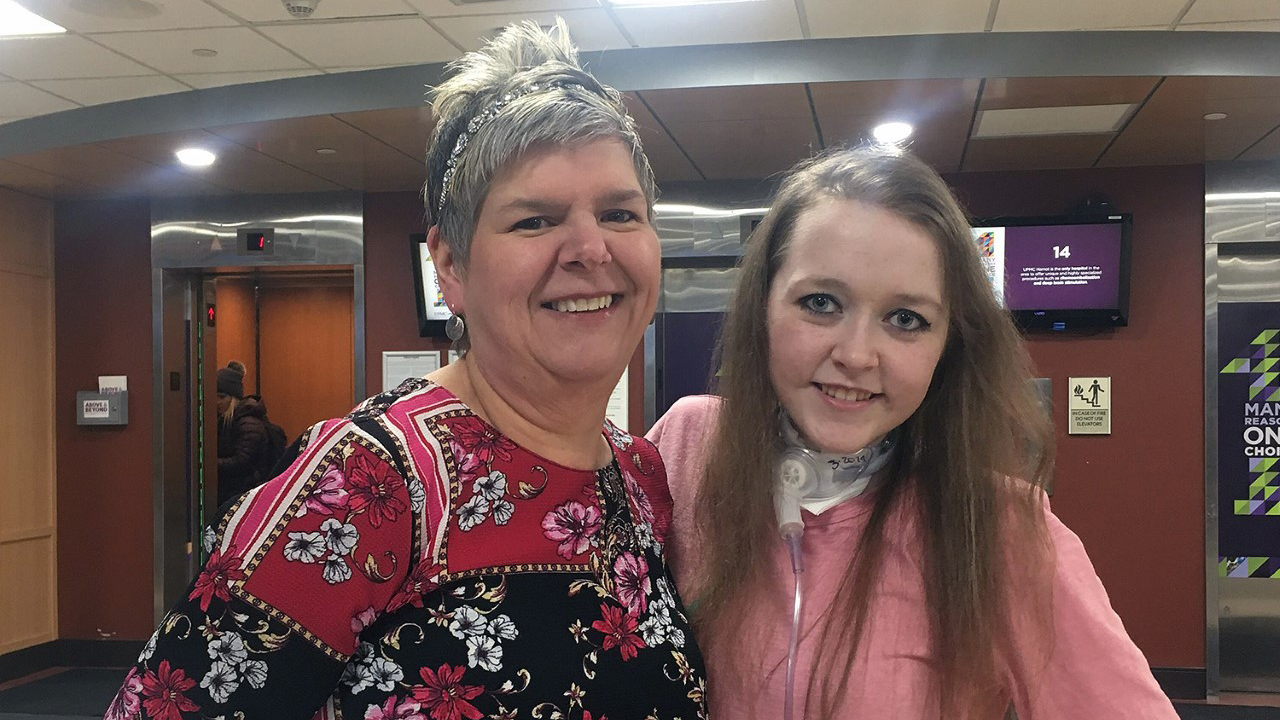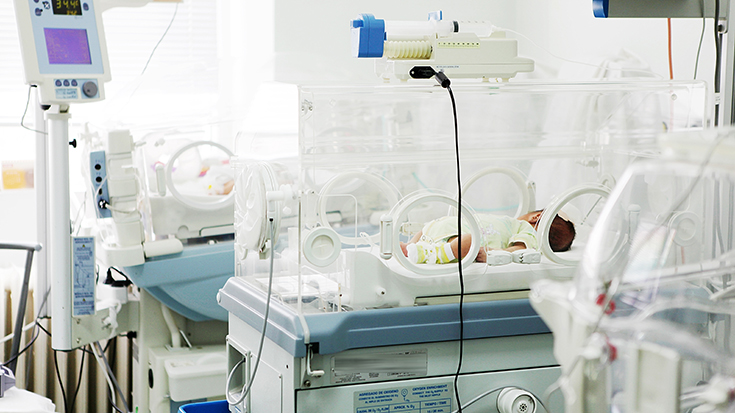
Brittany Loomis was just 19 years old and living with her six-month-old son in a shelter for homeless mothers when a migraine treatment led to a life-threatening infection. She ended up on a ventilator, and doctors told her she would likely never come off it. Plan on living the rest of your life in a nursing home, they told her.
Six months later she was moved to UPMC Hamot in Erie, PA, and met a health care team that saw things a little differently. AARC member Kaylene Cartney, BS, RRT, established a special bond with the young woman.
Just listen
Cartney believes firmly that RTs have an obligation to advocate for their patients.
“We are specialists in our field and patients feel comfortable talking to specialists,” she said. ”There may be times when RTs have more time to spend with a patient than a nurse or a doctor does and that gives us a special chance — if we listen to our patients.”
Of course, most patients have family and other loved ones they can lean on for support too, so the RT’s role as patient advocate simply revolves around assessing the patient at every encounter and ensuring the patient and family’s clinical and educational needs are met.
Brittany wasn’t so lucky. Her family was an hour away, including her young son. The prognosis delivered at the referring hospital had left her terrified about her future.
“It was Christmastime and she is just a kid. So, you could say my sympathy for this young girl — who is my daughter’s age — was pretty high,” Cartney said. ”As health care workers, it’s normal for us to separate ourselves from our patients, because if we don’t, we’re going to get hurt. However, if we get to know our patients and be vulnerable, we’ll notice that while patients may have problems that can’t be fixed medically it’s possible they just need someone to show they care.”
Cartney showed she cared on multiple levels, spending extra time with Brittany to explain the respiratory care she was receiving and bringing her craft items to help keep her busy and build up the strength in her hands. She put posters up in Brittany’s room, and she wrote inspirational messages on the piece of paper the young woman carried with her as physical therapy walked her in the mornings.
Brittany eventually improved to the point where the medical team thought she could come off the ventilator and get a speaking valve. Cartney explained how a trach worked and showed her a video of a speaking valve to get her comfortable with the idea. They weaned her from the vent and gave her the speaking valve and Cartney says the young woman immediately began carrying on a stream of conversation with anyone who would listen.
Five tips
Brittany was transferred to a rehab facility and Cartney visits her at least once a week. She says she gets just as much out of the relationship as Brittany does. But that’s not the point, says the RT.
“You should be a patient advocate whether you benefit or not,” Cartney said. “The person that should benefit is the patient, and if you want to gain something, knowing that you helped a patient should be enough. But If you’re lucky enough, as was the case with Brittany and I, you might gain a wonderful friendship.”
She admits it’s been nice proving the hospital that told Britney she’d never come off the ventilator wrong too!
Cartney has these five tips for RTs who want to get more involved in patient advocacy —
- Think outside the box.
- Take your time and get to know your patient.
- It’s okay to put yourself out there.
- Listen to your heart and humble yourself.
- Allow yourself to be vulnerable.
“As patient advocates, we have an opportunity to make a quality impact on the patients we care for and we need to get involved, put ourselves out there, and learn as much as we can, because in the end, we know more than the patient does, and when we’re able to give our patients the most informed information, they will be better equipped to make the most informed decision about their health,” Cartney said.
Kaylene Cartney shared her story about Brittany during a Leadership Team meeting at her hospital earlier this year. Be sure to watch the video till the very end, for a “reveal” that will make your day.
Email newsroom@aarc.org with questions or comments, we’d love to hear from you.














